Q
What Are the Common Issues with the BYD Sealion? Learn Before You Buy!
Before buying the BYD Sealion, it’s worth looking into some potential issues reported by early owners.
Some users have mentioned battery system glitches and occasional powertrain faults. In a few cases, the vehicle pulled to one side even after a four-wheel alignment. There were also reports of abnormal noises from the front suspension, which, although resolved after multiple repairs, appeared fairly frequently.
Other concerns included intermittent charging problems at the slow-charging port, which service centers struggled to diagnose. One owner noted that the power tailgate once failed to close properly.
Interior complaints included seat sagging, rust on metal components, and malfunctioning memory seat functions that failed to recall saved positions. There were also isolated issues like mirror vibration noise, dashboard warning messages, driver monitoring failures, inconsistent behavior in the ADAS system, problems with the wireless phone charger, and unusual streak marks on the front bumper in rainy conditions.
That said, it's not unusual for new vehicles to have some teething problems. BYD is actively working to improve product quality and after-sales support. We recommend checking real-world user reviews and long-term ownership reports to make an informed decision based on your needs and expectations.
Special Disclaimer: This content is published by users and does not represent the views or position of PCauto.
Related Q&A
Q
What segment does the BYD Sealion belong to?
The BYD Sealion is an electric vehicle positioned as a mid - sized SUV (D - Segment). It is mainly targeted at family users and consumers who pursue a sense of technology. Its body size and interior space meet the mainstream standards of this segment, which suits the Malaysian market's demand for practicality and comfort.
As a product of BYD's e - Platform 3.0, the Sealion is equipped with blade batteries and an intelligent electric four - wheel drive system. Its range and power performance are competitive in the same segment. Moreover, it supports fast - charging technology, which meets the local users' expectations for the convenience of electric vehicles.
In the Malaysian market, the mid - sized SUV segment is highly competitive. The entry of the Sealion provides consumers with more new - energy options. Its intelligent features, such as the DiPilot driving assistance system and the rotatable central control screen, also align with the local users' preference for technological configurations.
It's worth noting that the Malaysian government offers tax incentives for electric vehicles, which makes electric models like the Sealion more price - attractive. In addition, vehicles in this segment usually meet both the needs of urban commuting and light off - road driving, making them suitable for the diverse local driving scenarios.
Q
What is the Reslae Value of BYD Sealion?
As a new energy SUV, the second-hand resale value of the BYD Sealion in the Malaysian market will be influenced by various factors such as brand awareness, battery life, local after-sales network, and policy support. Currently, thanks to BYD's global advantage in electric vehicle sales and its battery technology accumulation, the residual value performance of its models in overseas markets is becoming more stable. However, when it comes to the Malaysian market, the resale value of the Sealion needs to refer to the data from local second-hand car platforms. Usually, it depreciates about 20 - 30% in the first year, which is lower than that of fuel vehicles in the same class. Since electric vehicles have lower maintenance costs and are supported by government tax incentives, in the long run, battery health (usually with an 8-year/150,000-kilometer warranty) and the popularity of charging facilities will become the key influencing factors. It is recommended that before purchasing a car, you compare the second-hand market conditions of models like the Tesla Model Y or Proton X90 in the same class, and keep an eye on the policy trends of new energy vehicles in Malaysia, such as import tax exemptions or charging subsidies. These will indirectly increase the demand for second-hand cars. Regular maintenance records and a complete transfer of the warranty can also significantly improve the residual value.
Q
What is the motor power of the BYD Sealion?
The BYD Sealion is a plug - in hybrid SUV with an engine displacement of 1498cc (1.5 liters), which falls within the common displacement range in the compact SUV market. It's well - suited for the daily commuting and family use of Malaysian consumers. As a new - energy vehicle, the Sealion combines the advantages of a traditional fuel engine and an electric motor, offering lower fuel consumption and higher environmental - friendliness while maintaining sufficient power output.
In the Malaysian market, the hybrid system of the BYD Sealion is particularly suitable for local road conditions. It can handle urban traffic congestion and meet the needs of long - distance driving. Moreover, BYD is a globally leading new - energy vehicle brand, and its technological maturity and reliability are widely recognized. The battery and electronic control system of the Sealion have also undergone strict tests to adapt to tropical climate conditions.
For Malaysian consumers, choosing the BYD Sealion not only allows them to enjoy the government's preferential policies for new - energy vehicles but also enables them to experience advanced hybrid technology. It's an ideal vehicle that combines practicality and environmental protection.
Q
What is the Engine applied in BYD Sealion?
The BYD Sealion is equipped with BYD's self-developed third-generation DM-i super hybrid system. Its core power consists of a high - efficiency 1.5L naturally aspirated engine and an electric motor. The maximum power of the engine is 81kW. When combined with the electric motor, the comprehensive output power can reach over 160kW, balancing fuel economy and power performance, which is suitable for both urban commuting and long - distance driving in Malaysia.
This engine adopts the Atkinson cycle technology with a thermal efficiency as high as 43%, significantly reducing fuel consumption. At the same time, it is paired with an E - CVT continuously variable transmission, providing a smooth driving experience. It's worth mentioning that BYD's DM - i technology is mainly driven by electricity, and the engine is mostly used as a high - efficiency generator. Therefore, in pure - electric mode, it can achieve quiet and zero - emission driving, while in hybrid mode, it has excellent range, which is very suitable for the diverse road conditions and environmental protection trends in Malaysia.
In addition, BYD also provides a long - term warranty for the battery pack, so users don't have to worry about battery durability issues. For Malaysian consumers, the BYD Sealion not only has the advantage of low operating costs but also can enjoy the local government's tax incentives for new energy vehicles. It is a hybrid model worthy of attention.
Q
When is the Launch Date of BYD Sealion?
The BYD Sealion was launched in Malaysia from February 23rd to 25th, 2024. Prior to that, pre-orders were officially opened on January 19th, and the estimated price is RM200,000. The vehicle comes in multiple versions. For example, the standard version is equipped with a Single Motor and an RWD (Rear-Wheel Drive) system, with a pure-electric range of 550 km; the long-range version also features a Single Motor and an RWD system, but its range reaches 700 km; the performance version is powered by a Dual Motor and an AWD (All-Wheel Drive) system, with a pure-electric range of 650 km.
It focuses on a sporty and youthful feel, adopting the "Ocean Aesthetics" design style. The interior is full of a sense of technology. It also supports DC fast-charging technology with a maximum power of 150 kW, and its safety is guaranteed by the "Blade Battery". Since its launch, it has attracted a lot of attention from consumers.
Q
What is the Size of the BYD Sealion Tyre? Check Standard Here!
The BYD Sealion is equipped with 18-inch rims, and its tire specification is 225/50 R18, with the same tire specifications for both the front and rear. This tire specification is carefully designed. The "225" indicates that the tire width is 225 millimeters. A wider tire can provide a larger contact area with the ground, thereby enhancing the vehicle's grip during driving, especially during acceleration, braking, and high-speed driving, making the vehicle's handling more stable and safe. The "50" represents the aspect ratio, which means the tire thickness is 50% of the width. A moderate aspect ratio balances comfort and handling, effectively filtering road bumps and bringing a comfortable driving and riding experience for the passengers inside the vehicle. The "R" stands for the radial tire structure. Tires with this structure have good heat dissipation and low rolling resistance, which can improve fuel economy or extend the driving range. The "18" refers to the rim diameter of 18 inches, which complements the overall body design and shows a dynamic style.
Q
What is BYD Sealion? Here's the Full Introduction for You!
The BYD Sealion is a pure-electric mid-to-large-sized sedan that emphasizes a sporty and youthful appeal. It features an eye-catching exterior design, including sharp LED headlight clusters, water ripple daytime running lights, an elegant Coupe-style sloping roof, 19-inch sporty alloy wheels, and droplet-shaped LED taillight clusters. The interior follows the "Ocean Aesthetics" design concept and is equipped with a 10.25-inch full LCD instrument panel, a leather multi-functional steering wheel, a 15.6-inch rotatable LCD entertainment system, ambient lighting, and an electronic gear lever, exuding a high-class and tech-savvy vibe.
In Malaysia, there are three trim levels available: Dynamic, Premium, and Performance. The entry-level Dynamic trim is powered by a rear-mounted electric motor with 204 horsepower. It can accelerate from 0 to 100 km/h in 7.5 seconds. The battery has a capacity of 61.4 kWh, offering a range of up to 460 km under the WLTP test standard or 510 km under the NEDC standard. The Premium trim also has a rear-mounted single motor, but with 313 horsepower. It can achieve 0-100 km/h acceleration in 5.9 seconds. The battery capacity is 82.5 kWh, providing a range of 570 km (WLTP) or 650 km (NEDC). The Performance trim comes with a dual-motor all-wheel-drive system, delivering even more powerful performance. Additionally, the Sealion supports a maximum DC fast-charging technology of 150 kW and is paired with the "Blade Battery", ensuring high safety standards.
Q
Need a Loan for BYD Sealion? Here's How to Calculate It!
To calculate the loan for the BYD Sealion, you can start from the following aspects. First, you need to clarify that the formula for calculating loan interest is Loan Interest = Borrowed Amount × Loan Term × Interest Rate. However, in reality, it will be more complicated due to compound interest and other fees.
Regarding loan plans, there are different down - payment ratios. Commonly, there are 20%, 30%, 40%, 50%, 60%, etc. The higher the down - payment ratio, the less the loan amount will be, and the monthly payment and total interest will also change accordingly. The repayment terms usually include options such as 12 months, 18 months, 24 months, and 36 months. With a short - term repayment term, the monthly repayment amount is high, but the total interest is low. The situation is the opposite for a long - term repayment term.
There are two repayment methods: equal - principal - plus - interest and equal - principal. For equal - principal - plus - interest, the monthly repayment amount is fixed, and the proportion of interest in the early stage is large. For equal-principal, the monthly repayment amount decreases, and the interest also decreases accordingly.
In addition, the interest rates of different banks and financial institutions vary. You should compare and choose the institution with a lower interest rate. At the same time, pay attention to whether there are additional fees such as handling fees and insurance premiums. By considering all these factors comprehensively, you can calculate a loan plan that suits your financial situation.
Q
What is the Top Speed of BYD Sealion? Click Here to Figure it out!
The top speed of the BYD Sealion can reach 180 kilometers per hour. This performance is sufficient to meet the daily driving and high-speed cruising needs of Malaysian users, while also taking into account fuel economy and environmental protection features. Considering the hilly terrain and congested urban roads in Malaysia, the Sealion's hybrid power system can flexibly switch between power modes. In pure-electric mode, it offers a quiet experience for short-distance commuting, and in hybrid mode, it can give full play to the advantages of combined power.
It's worth noting that the tropical climate in Malaysia places high demands on battery heat dissipation performance. BYD's blade battery technology has good thermal stability, and when combined with an intelligent temperature control system, it can effectively handle high-temperature environments. During actual driving, it is recommended that car owners regularly check the battery's health status and rationally plan charging arrangements during long-distance trips to fully unleash the vehicle's performance.
In addition, the Malaysian government offers tax incentives for new energy vehicles. Buying a vehicle like the Sealion allows owners to enjoy a certain degree of tax relief, making the Sealion more competitive in terms of cost-effectiveness.
Q
What Segment is BYD Sealion 7?
The BYD Sealion 7 falls into the mid-size SUV segment. Its body dimensions and interior space make it suitable for family use. At the same time, it combines a certain sense of luxury with advanced technological features, meeting the current needs of Malaysian consumers for new energy SUVs. This vehicle is equipped with BYD's advanced electric technologies, such as blade batteries and high - efficiency electric drive systems, offering excellent range, which is ideal for both daily city commuting and long - distance trips.
In the Malaysian market, the competition in the mid-size SUV segment is fierce. The Sealion 7, with its electrification advantages and intelligent features, provides consumers with more options. Additionally, the Malaysian government has been promoting the popularization of electric vehicles in recent years, including offering tax incentives and building charging infrastructure, making electric vehicles like the Sealion 7 even more appealing.
If you're considering buying an environmentally friendly and practical SUV, the Sealion 7 is worth your attention. It's also advisable to compare it with other models in the same class, such as the Tesla Model Y or the Toyota bZ4X, to make a more suitable choice for yourself.
Popular Cars
Model Year
Car Compare
Car Photo
Latest Q&A
Q
Is the 1.5 L 4 cylinder?
Yes, a 1.5L engine is typically a 4-cylinder setup—the most common configuration for small to mid-sized displacements. This layout strikes a solid balance between fuel efficiency and power output, making it ideal for daily commuting and family use. Four-cylinder engines are relatively simple in design, cheaper to maintain, and benefit from proven technology that delivers smooth operation. You'll find this configuration widely used by mainstream brands like Honda, Toyota, and Mazda. While there are some 1.5L 3-cylinder options out there, the 4-cylinder remains the go-to choice, especially in models prioritizing durability and refinement. If you're shopping for a 1.5L-powered car, pay attention to specific tech features—turbocharging, direct injection, etc.—as these can significantly impact real-world driving dynamics and fuel economy.
Q
What is the displacement of a V8 engine?
The displacement of a V8 engine typically ranges from 4.0 to 6.2 liters, depending on the vehicle and its purpose. For example, high-performance sports cars often pack a 5.0-liter or larger V8, while trucks and SUVs usually stick with something between 4.3 and 5.7 liters. Known for its brute power and smooth operation, the V8 is a go-to for acceleration and towing—though its thirst for fuel is something buyers always weigh up.
These days, turbocharging has changed the game. Smaller-displacement V8s (like a twin-turbo 4.0L) can now deliver big-block performance with slightly better efficiency. And let’s not forget the sound—few things beat the roar of a tuned V8 exhaust, a big reason why enthusiasts love ‘em.
If you’re into V8s, keep an eye on local used car listings or auto shows—you’ll often spot some gems there.
Q
What is the difference between 1l and 1.2 L engine?
The key difference between 1-liter (1L) and 1.2-liter (1.2L) engines comes down to displacement—the total volume of all cylinders in an engine, measured in liters. Generally, a larger displacement means more power and torque, so a 1.2L engine will likely feel stronger during acceleration, highway driving, or when tackling hills with a load. That said, it’ll also drink a bit more fuel compared to the 1L.
The 1L, being smaller, prioritizes fuel efficiency, making it a smart pick for city commuting or everyday runs. On the flip side, the 1.2L’s extra performance often means higher manufacturing costs, which might bump up the car’s price tag. Plus, the 1L’s compact size fits better in smaller or budget-friendly models.
Your choice really hinges on driving needs: go for the 1.2L if you regularly hit the highway or want more grunt, but stick with the 1L if you’re mostly urban-bound and watching fuel bills. Oh, and don’t forget—tech like turbocharging or variable valve timing can squeeze near-equal performance from smaller engines these days, so specs alone don’t tell the full story. Always check how the engine’s tuned.
Q
What does 5.7 liter engine mean?
A 5.7-liter engine refers to a total displacement of 5.7 liters, meaning all cylinders combine for a total working volume of 5,700 cubic centimeters. Generally, a larger displacement allows the engine to take in more air and fuel, delivering stronger power and torque—making it ideal for performance-oriented vehicles or those built for heavy-duty work, like pickup trucks, full-size SUVs, or muscle cars.
In the local market, you’ll often find big-displacement engines in American-branded vehicles. These engines excel at high-speed cruising or towing heavy loads, though they do come with higher fuel consumption and increased running costs.
Thanks to advancing technology, many automakers now use turbocharging or hybrid systems to help smaller engines deliver power comparable to older, larger naturally aspirated units—like how some modern 2.0L turbocharged engines can match the performance of older V6 engines while being far more fuel-efficient.
If fuel economy is a priority, a smaller turbocharged or hybrid model might be the better choice. But if you value the smooth, raw power of a classic big-block, a 5.7-liter engine remains a timeless option.
Q
What liter engine is a V6?
The displacement of a V6 engine isn't set in stone—it typically ranges between 2.5 and 4.0 liters, depending on the vehicle's design and purpose. For example, a family sedan might pack a 2.5L or 3.0L V6, while performance cars or pickups could go for 3.5L or larger. Displacement directly impacts power output and fuel economy: bigger usually means stronger, but thirstier too.
Named for its six cylinders arranged in a V-shape, the V6 strikes a sweet spot—delivering smoother operation and better balance in a compact package compared to four-cylinder engines, while being more fuel-efficient than V8s. That's why it's a popular choice for midsize sedans and SUVs.
These days, with turbocharging becoming commonplace, smaller-displacement V6 turbos can match the punch of older, bigger engines while sipping less fuel. Choosing one? Think about your daily needs. A 2.5L works fine for city commutes, but if you're frequently hitting the highway or towing, step up to 3.0L or above.
View MoreRelated News

BYD Sealion 7 is not only cheaper than Tesla Model Y, what other differences do they have?
Kevin WongOct 29, 2025
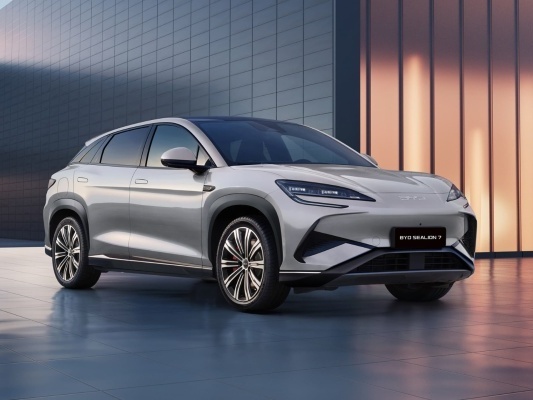
BYD Sealion 7 Surpasses Tesla Model Y to Become Australia’s Best-Selling EV
Kevin WongMay 9, 2025

Best Value Pick! BYD Sealion 7 Delivers Excellent Range & Luxurious Features
MichaelApr 17, 2025
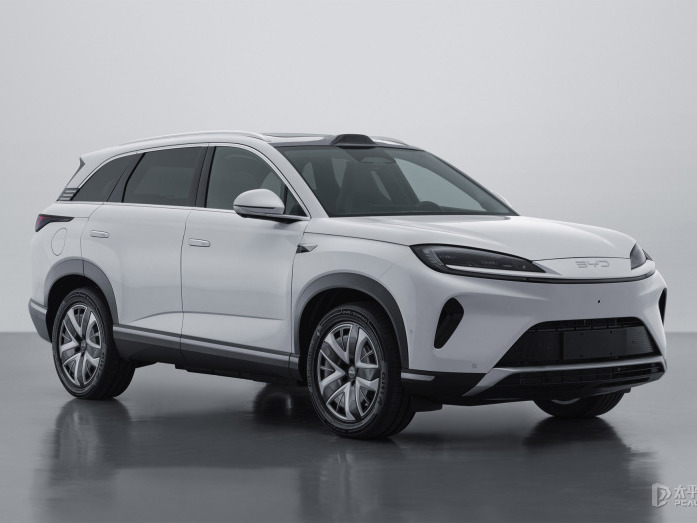
BYD Sealion 07 DM-i declaration image exposed: Fifth-generation DM technology, 0-100km in 4.9s!
LienDec 10, 2024
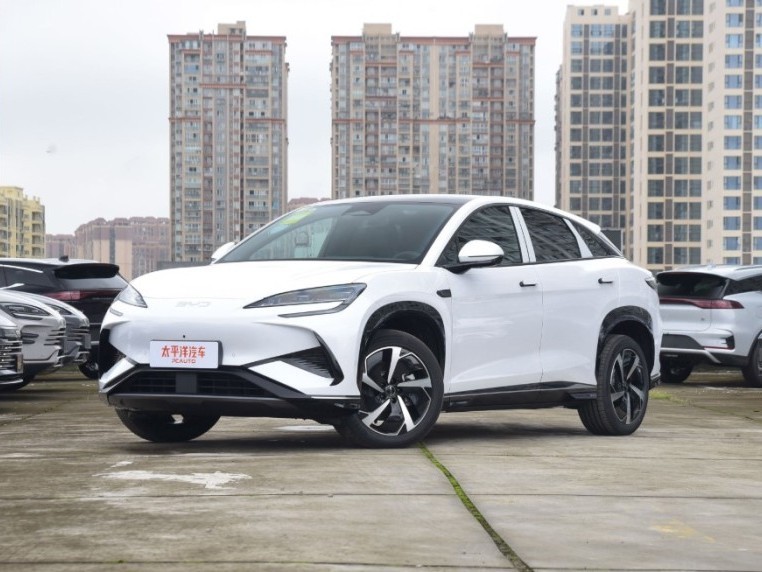
BYD SEALION 7 Thailand Motor Expo 2024 stealing the show: High cost-performance ratio, rich configuration!
JamesNov 29, 2024
View More






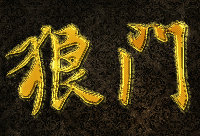
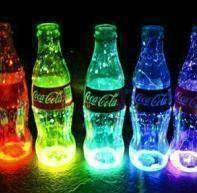

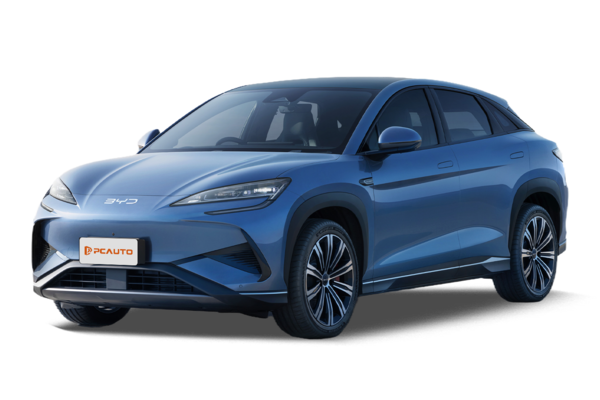


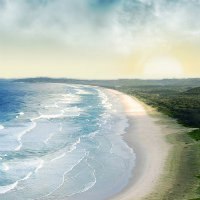


Pros
Cons